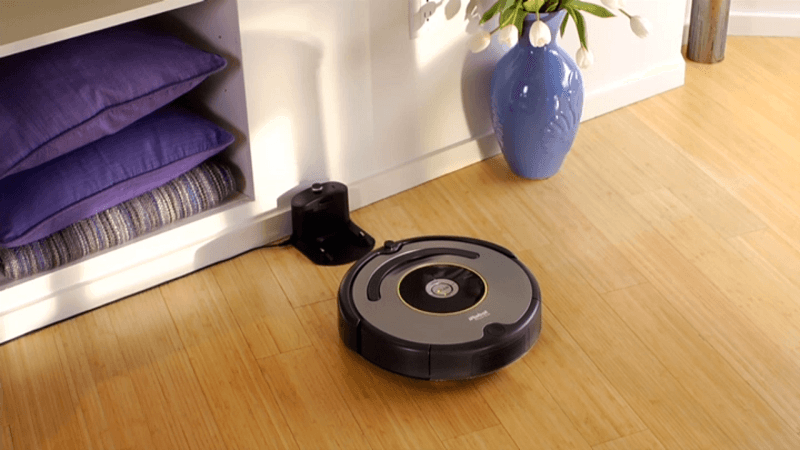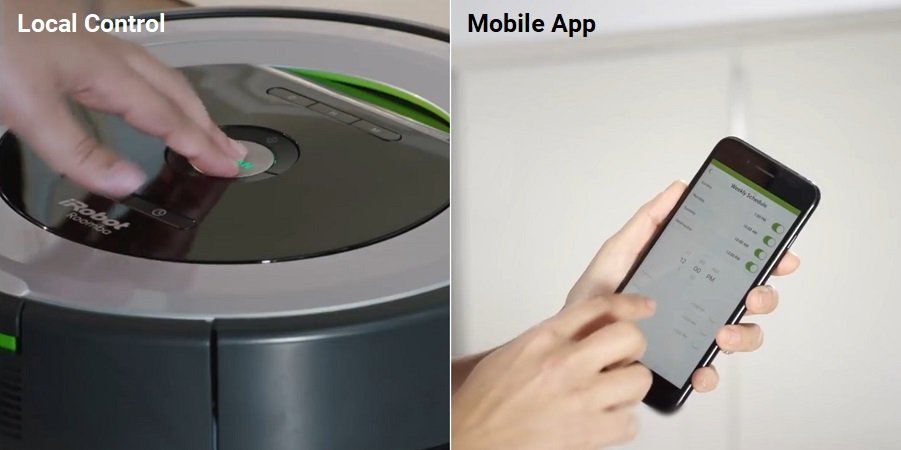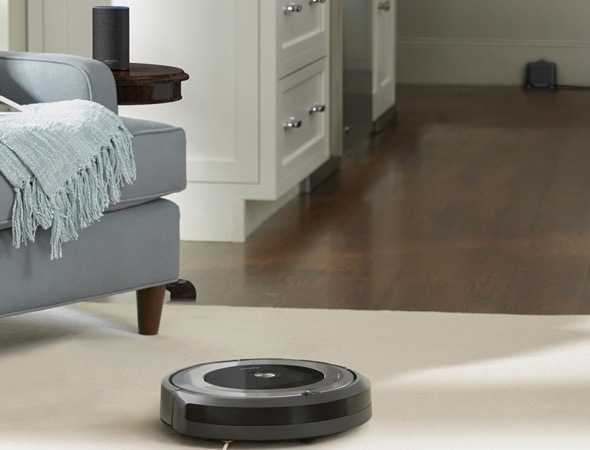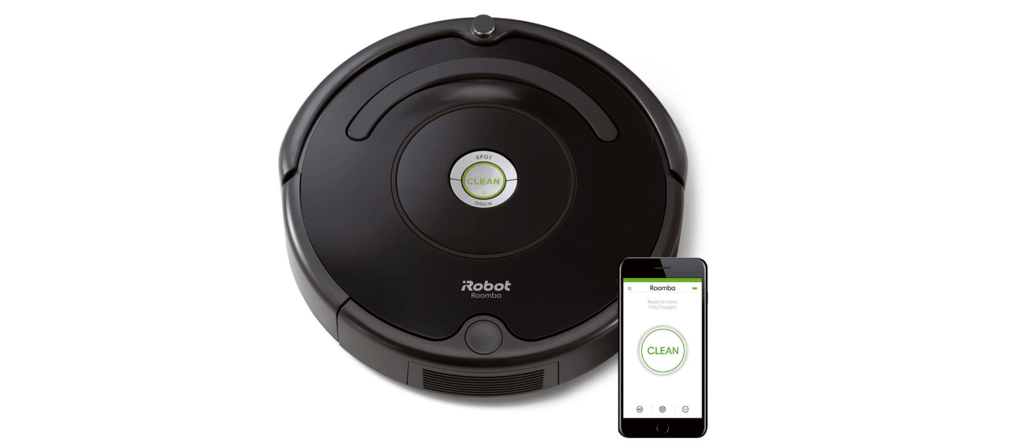Most of us understand marketing. We know that a company will produce a product, followed by another and yet another. As the years go by the older products will fall off and the newer ones will stay. iRobot is the same with the Roomba lines. The older models fade away from the storefront to make room for the new ones. However, some stay on and linger longer than others.
The Roomba 675 is still considered a “new” robot with a release date of early 2018. However, the technology used in this model is a few years old. Why does it hang around? Because of its popularity. The 675 replaces the 614, 650 and 655. It is also one of only two 600 series robots left in the iRobot Store. Is it a good fit for your budget and home? We will find out right now.
Contents
Who Is the Roomba 675 for?
The budget-friendly Roomba is designed to be a good fit for most homes. You can find yourself included in this list if you:
- Don’t worry about allergen reduction.
- Have a home with little traffic and no pets.
- Need wireless communications for your robot.
- Want a robot you can schedule at any time, from anywhere.
Who is the Roomba 675 not for?
There are, of course, those that won’t find the 675 a good fit. You can count yourself among this group, potentially, if you:
- Need a robot with containment options included.
- Don’t like extended maintenance regimens.
- Are looking for the latest and the greatest in home cleaning robotics.
Dimensions, Features and Options
I won’t delay anymore, let’s get into the meat of the debate here. I will explain, in detail, the features that you should consider while making your final decision. Shall we begin?
The Battery has Been Downgraded for a Few Years Now, But it is More Efficient
When the 671 was released, there was a larger battery. This larger battery was seen in a few of the original 600 series robots and some of the 500 series additions. However, iRobot has revamped their machines to take one of two batteries.
They now offer a 3600mAh monster for their premium vacuums and an 1800mAh for their budget and mid-range lines. This accomplishes two things: first, they only have to worry about producing, selling and maintaining two batteries instead of five or six; and second, it saves you from confusion on which one to purchase when the time comes.
That being said, you may decide you need a larger celled, longer lasting battery. However, with the efficiency built into these newer models, you probably don’t.
The battery on the Roomba 675 will run for up to 90 minutes. That gives you an hour and a half of cleaning time on a robot that averages 18 to 22 minutes per room. So, to break it down, on a single charge the Roomba can clean your living room, dining room, kitchen, hallway and bedroom.
If you want a different scenario, the average hard flooring coverage of the Roomba 675 is about 1200 square feet per charge. Full carpet homes will get about 900 to 1000 square feet. If you have a mix, it will fall somewhere in the middle.
The Battery Has a Job to do and it Will Die
The main job of the battery is to provide power to all of the moving parts and keep the computer alive to run the sensors and feedback systems. Eventually, it will run out of charge. When this happens, there will be an internal alert.
Once the battery reaches between 10 and 15 percent charge remaining, the robot will begin making its way back to the charging station (iRobot call this the Home Base). The Roomba 675 will dock and begin recharging its battery.

The recharging process takes about two and a half hours. Once it is complete, though, the robot does nothing. It will not return to where it left off and it won’t start over. You will need to manually restart a cleaning cycle with the mobile app or the local controls (voice commands work too, which I will cover in a minute).
If the robot has not done a complete cleaning, you will notice that some areas didn’t get covered, obviously. However, what will happen is that over subsequent cleaning cycles, the robot will cover the entire home. While this can take up to three or four full cycles, it isn’t much to worry about.
Why? Because these robots are not designed to replace regular cleanings with your upright vacuum. If you purchase any robot with the idea in mind you won’t have to pull out the big heavy vacuum from the hall closet ever again, you will be highly disappointed.
What they are designed for is to keep your floors presentable between regular cleaning with your upright and keep the path to your fridge clear, so you don’t get crumbs stuck to your feet during your midnight snack run.
For this purpose, the robots work very well. The Roomba 675 will keep your floors picked up and presentable should the mother-in-law stop by unexpectedly and do a visual white-gloved inspection of your home.
Every 18 to 30 months, depending on usage, the battery will stop holding a charge and need to be replaced. When this happens, you can turn to an online vendor such as Amazon, or the iRobot store for a replacement. It isn’t that difficult and won’t take you long to have the robot up and running like new once again.
The Filtration Leaves a Little to be Desired
One of the large issues I come across through these reviews and talking with consumers is that there seems to be a large disregard for HEPA filter certification. Allow me to expand on this very briefly.
HEPA certification means your filter is rated and certified to capture particles down to three microns in size. This will remove up to 99 percent of in-home allergens that pass through it. Sounds like a great deal.
However, most larger manufacturers, such as iRobot, have stopped obtaining the HEPA certification. No, I don’t know why except to assume it has to do with the budget. What I do know is that they still create the same filters that were HEPA certified, still capture allergy-inducing particles like mold, mildew, spores, dust mites and pet dander.
I tell you all of that to tell you this: it doesn’t matter. The Roomba 675 uses the AeroForce filter which is not HEPA rated. It will capture particles down to 10 microns in size and some even smaller. Allergens, though, are not included.
Why should you care about this? You really shouldn’t. Of course, this is a personal preference and you may disagree with me. That is fine. However, let me point out that HEPA filtration is great, since most of the in-home particles are either in our carpeting or in the air, capturing them can reduce the allergy attacks that most of us have from time to time.
Your Central air system should have a HEPA filter. So should your large, powerful upright vacuum. Your robot vacuum, though, isn’t going to make much of a difference. Unless you are following the Roomba around on your hands and knees taking deep breaths of the exhaust, you won’t even notice.
You can pay more for the HEPA filtration in other models or even from other vendors, but if you ask me, it’s a waste of your money. The sole exception is those homes that don’t have another vacuum; HEPA filtration in your Roomba may be more prominent in those situations.
The Control Options Become Commonplace, if not Expected

In this digital age, we are currently in, it is expected that infrared remote controls are a thing of the past. We can call up anything on our smartphones and now we can even use our voice to get things done. Cleaning our floors is no exception.
There are limited local controls, of course. Let me cover those quickly for you now. The large Clean button in the center of the robot will send the robot off to do an automatic cleaning cycle. You will have to push it twice, though; once to wake it up and the second to go clean.
Above this button is the Spot Clean mode. You can use the handle to carry the robot to a specific spot on your floor, set it down and have it clean only this spot. The Roomba 675 will spiral around, expanding to about a three-foot radius, detailing the area within.
Below the Clean button is the Home button. As you can probably guess, this will send the robot to the charging station. You will have to pause the cleaning cycle if it is currently activated by pressing the Clean button once. Doing so will pause the robot alerting it that you have new instructions for it. Press the Home button and the 675 will scurry off to the Home Base.
The Mobile App Will be Your Go-To Control Method
Almost without fail, the iRobot Home App will be the base control unit for your operations. Through the app you can start, stop, pause and resume a cleaning cycle. You can tell the robot to go charge its battery, or you can get a status report of the robot and battery life.
You will also be able to set a schedule. Doing so will enable you to have the robot clean at any time, no matter where you are or what else is going on.
What you will not get are the newer features. There isn’t a camera like the 900 series, so there is no map to look at. You also won’t have access to the Imprint Smart Mapping that the i7 comes with or detailed cleaning reports.
Voice Controls Work Well, Also
If you have an Amazon Alexa enabled device or a Google Assistant device, you can sync the Roomba 675 and use voice commands.
The basic commands will allow you to start, stop, pause and resume a cleaning cycle. You can also find out if there are any upcoming scheduled cleanings, add or remove a scheduled cleaning as well as send the robot back to the dock, canceling a cleaning and recharging the batteries.

When it comes to controlling your robot, you have options. These options go through regular upgrades and there may be newer commands or app features around the corner. As it is now, though, there isn’t anything the robot can’t do through the mobile app or voice commands.
Specifications Chart
Let’s take a look at the features list that the Roomba 675 offers (or doesn’t) in a quick-view chart.
| Roomba 671 | |
| Dimensions | 13x13x3.7 inches |
| Weight | 7.8 pounds |
| Battery | 1800mAh Lithium-ion |
| Automatic Recharge | Yes |
| Automatic Resume | No |
| Runtime | Up to 90 minutes |
| Recharge Time | 2 to 3 hours |
| Filter | AeroForce Standard |
| Collection Bin Capacity | 0.3L |
| Wireless Communications | Yes |
| Bluetooth | No |
| Remote Control | No |
| Mobile App | Yes |
| Voice Commands | Yes |
| Local Controls | Yes |
| Navigation | iAdapt Navigation Technology |
| Mapping | None |
| Drop Sensors | Yes |
| Bump Sensors | Yes |
| Dirt Detection Sensors | Yes |
| Containment | Virtual Wall Barrier (separate purchase) |
| Scheduling | Yes |
| Full Bin Indicator | No |
| Side Brushes | 1 |
| Floor Types | All |
| Warranty | 1 year |
| Price | Check on Amazon |
Alternative Options
So you are saying to yourself, “this is great, but how does it compare to other vacuums?” Or maybe you have decided against it and want to look at other options. Either way, here are a few models to look at.
Roomba 690
The 690 is the other model left on the iRobot website from the 600 series. It offers much the same attributes of the 675 with a few small differences. The first difference is the color. The 690 is a gunmetal gray where the 675 is black.
The other difference? The Roomba 690 ships with a dual-mode virtual wall barrier, which will cost you about $80 for two barriers when purchased separately. The Roomba 690 comes with one barrier tower and a higher price point of about $50 over the Roomba 675. Other than that, they are identical machines.
Read our review of the Roomba 690
Roomba e5
The latest budget-friendly model is the Roomba e5. It has a lot of improvements taken from the 800 and 900 series robots that the 675 just doesn’t have. For starters, the e5 has increased suction (about five times the power) compared to the 675.
It also has a few other differences: Large capacity, washable dustbin (0.7L), brushless extractors instead of a bristle brush roll and a HEPA rated filter. The Roomba e5 will cost you quite a bit more, but you have a lot of features and options that aren’t available with the Roomba 675 as well.
Read our comparison of the Best Roomba Vacuums
bObSweep PetHair Plus
[easyazon_image align=”center” height=”500″ identifier=”B01JSSGSY6″ locale=”US” src=”https://smartrobotichome.com/wp-content/uploads/2019/03/41DZra8AaOL.jpg” tag=”srh-easyazon-20″ width=”500″]The PetHair Plus from bObSweep is an older model and is still touted as one of the best robotic vacuums for pet hair. It offers containment options, auto recharge and mobile controls. What you won’t get are the same features missing on the 675. However, it does have a lot of similar features to compare to.
Notwithstanding, the bObSweep was innovative for it’s time (about four years old now) and is still the flagship robot for the company. That says a lot about its reliability. Consumers who opted to buy it brand new have not regretted it, for the most part. It takes a bit to get used to and the navigation is a bit spotty, but it works and works relatively well.
Read our comparison of the bObSweep PetHair vs PetHair Plus
Frequently Asked Questions
I will take a few moments to answer some of the more commonly asked questions about the Roomba 675 (no, you can’t let your cat ride on it). If you still have questions, please use the comment section below.
Q. If there is no mapping, how does the robot know where to go?
A. The Roomba 675 uses magic, alien technology and a bit of witchcraft to get around your home. On Earth, we call them sensors. There are three major sensor types available on the 675:

- Bump sensors allow the robot to calmly and softly bump into furniture and walls to know when to change direction or when the obstacle isn’t passable (like a bed skirt might be, or curtains).
- Drop sensors detect ledges and drop-offs of more than an inch, which force the robot to stop and alter course, so it doesn’t take a tumble.
- Dirt Detection sensors alert the robot that the area is still dirty and it should take another pass, or two.
Everything working together allows the robot to navigate your home, clean as it goes and helps it find its way back to the charging station when needed.
Q. What type of containment does the Roomba 675 have?
A. The very short answer is: none. The longer answer is that the Roomba 675 (along with every other Roomba model) is fully compatible with the legacy containment Virtual Lighthouses, as well as the standard Virtual Wall Barriers.
However, while being compatible with them, it doesn’t come with any. If you choose not to purchase the barriers separately, you will be forced to use natural containment methods like closing doors or putting up blockades.
In Conclusion
The Roomba 675 is a legacy model with new attributes. You get a budget-friendly robot that will clean your home like it was designed to. There isn’t a lot of flash or panache with the 675 and there doesn’t need to be.
You get the use of the mobile app and voice controls and while the collection bin is smaller, it is simple to keep clean. Maintenance is a bit of a chore because of the brush roll, but even when completely tangled the entire process takes ten to 15 minutes.
There are arguments about the cleaning ability and the advancements that it is missing, but with the money you can save, everything bad said about it is easily overlooked. My largest gripe is that you don’t get any containment options with the purchase, like you do with the Roomba 690. However, a separate purchase will give you two barriers for not much more.
In a Nutshell
The Roomba 675 has a great balance between efficiency, dirt detection and cost. What you lack in containment and some missed spots around the home, you make up for in price and performance.
What I Like
- The mobile app and voice controls are superb.
- Will clean virtually any floor surface.
- Entry-level price point makes it an easy buy for almost everyone.
What I Don’t Like
- The Virtual Wall containment towers aren’t included.
- Maintenance is a bit harder than it needs to be.
- A small collection bin means you have to empty it more often.

Nearly all “central air systems” cannot use HEPA filters. The best that some can use is MERV 13, which can help with viruses and wildfire smoke particles. Cleaning without HEPA simply re-circulates many of the smallest and most dangerous particles. But some central HVAC systems can’t handle this, so the only recourse is HEPA air cleaners or a DIY MERV 13-based air cleaner with a box fan. Fortunately HEPA vacuums are readily available.
Hey Todd,
Thank you for sharing your expert knowledge, I’m sure our other readers will appreciate it!